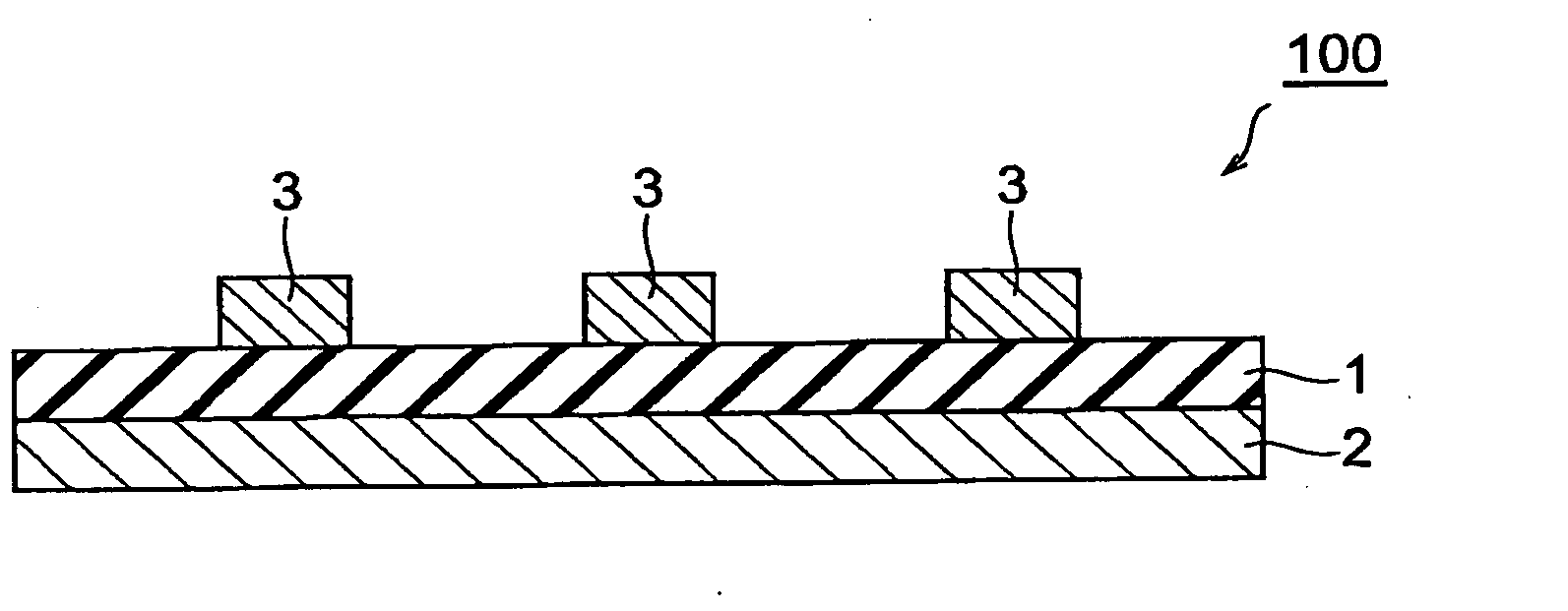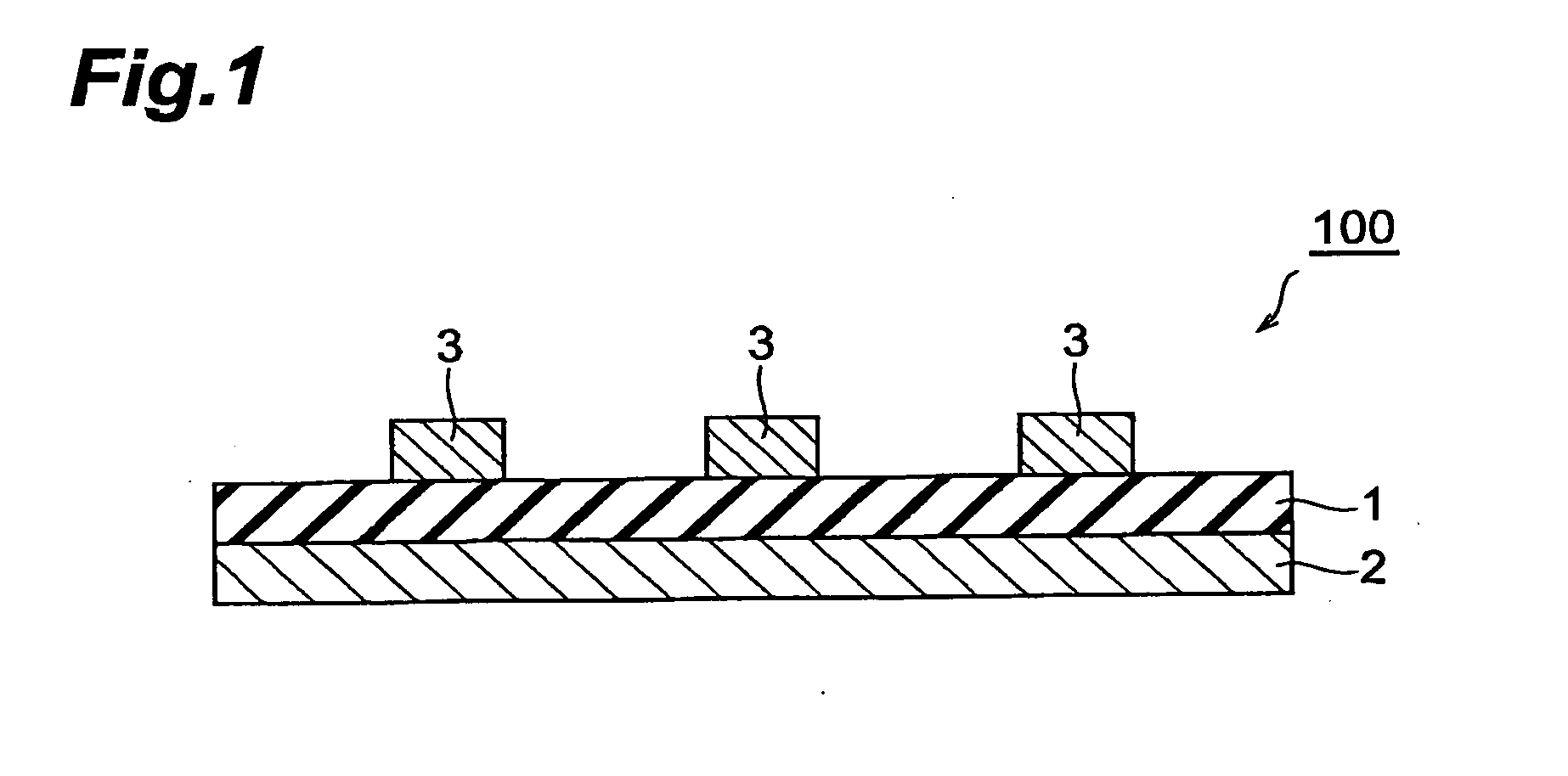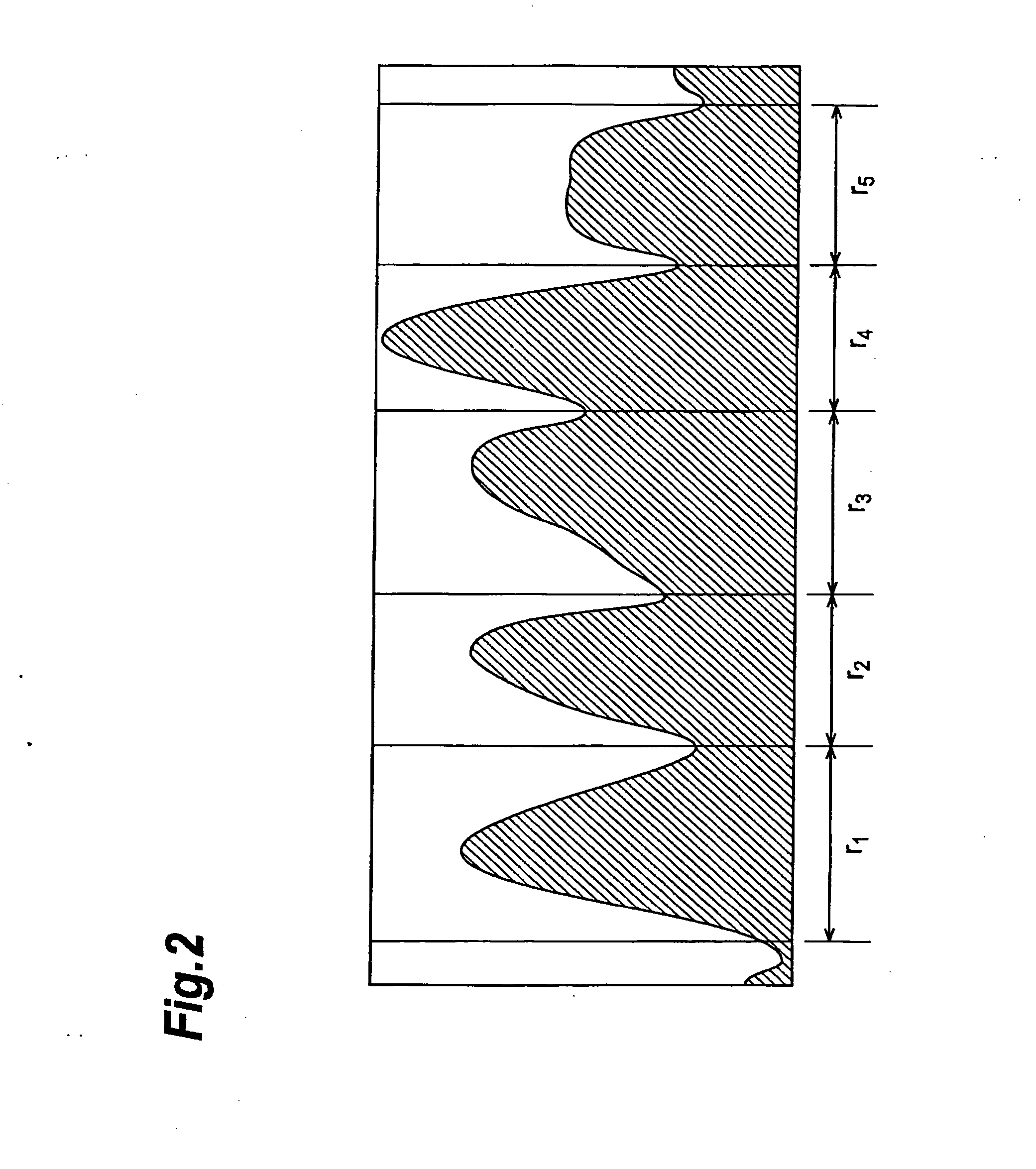Dielectric film production process and capacitor
a production process and dielectric film technology, applied in the direction of electrolytic capacitors, fixed capacitor details, fixed capacitors, etc., can solve the problems of oxidation and cease to function as electrodes, difficult to obtain dielectric films, and difficult to achieve dielectric films. achieve the effect of high dielectric constant, adequately inhibiting the oxidation of the metal layer, and high dielectric constan
- Summary
- Abstract
- Description
- Claims
- Application Information
AI Technical Summary
Benefits of technology
Problems solved by technology
Method used
Image
Examples
Embodiment Construction
[0018] Preferred embodiments of the invention will now be described in detail. However, it is to be understood that the invention is in no way limited to these embodiments.
[0019]FIG. 1 is a cross-sectional view showing an embodiment of a capacitor according to the invention. The capacitor 100 shown in FIG. 1 is provided with a dielectric film 1, and a first electrode 2 and multiple second electrodes 3 formed sandwiching it and facing each other. A capacitor function is obtained at the sections where the first electrode 2 and the second electrodes 3 are facing.
[0020] The dielectric film 1 has a density exceeding 72% of the theoretical density calculated based on the lattice constant. The density of the dielectric film 1 is more preferably at least 80% and more preferably at least 85% of the theoretical density. The upper limit for this percentage is preferably as high as possible, and will usually be about 95%. The density of the dielectric film 1 may be determined, for example, by...
PUM
| Property | Measurement | Unit |
|---|---|---|
| mean particle size | aaaaa | aaaaa |
| mean particle size | aaaaa | aaaaa |
| particle size | aaaaa | aaaaa |
Abstract
Description
Claims
Application Information
 Login to View More
Login to View More - R&D
- Intellectual Property
- Life Sciences
- Materials
- Tech Scout
- Unparalleled Data Quality
- Higher Quality Content
- 60% Fewer Hallucinations
Browse by: Latest US Patents, China's latest patents, Technical Efficacy Thesaurus, Application Domain, Technology Topic, Popular Technical Reports.
© 2025 PatSnap. All rights reserved.Legal|Privacy policy|Modern Slavery Act Transparency Statement|Sitemap|About US| Contact US: help@patsnap.com



